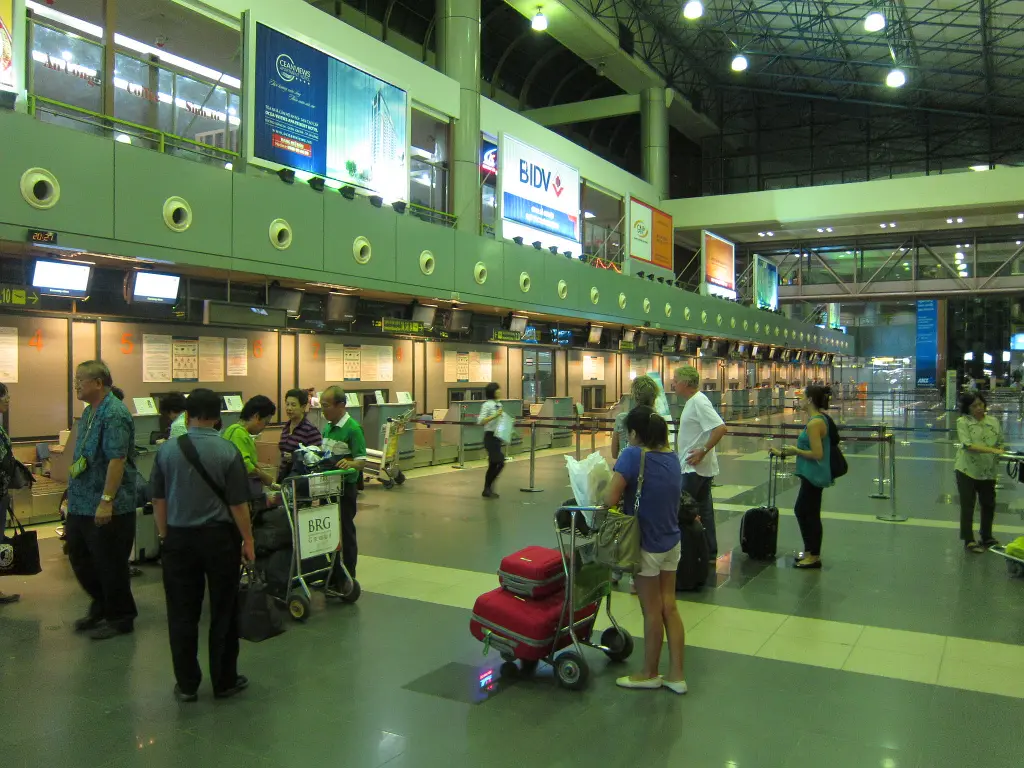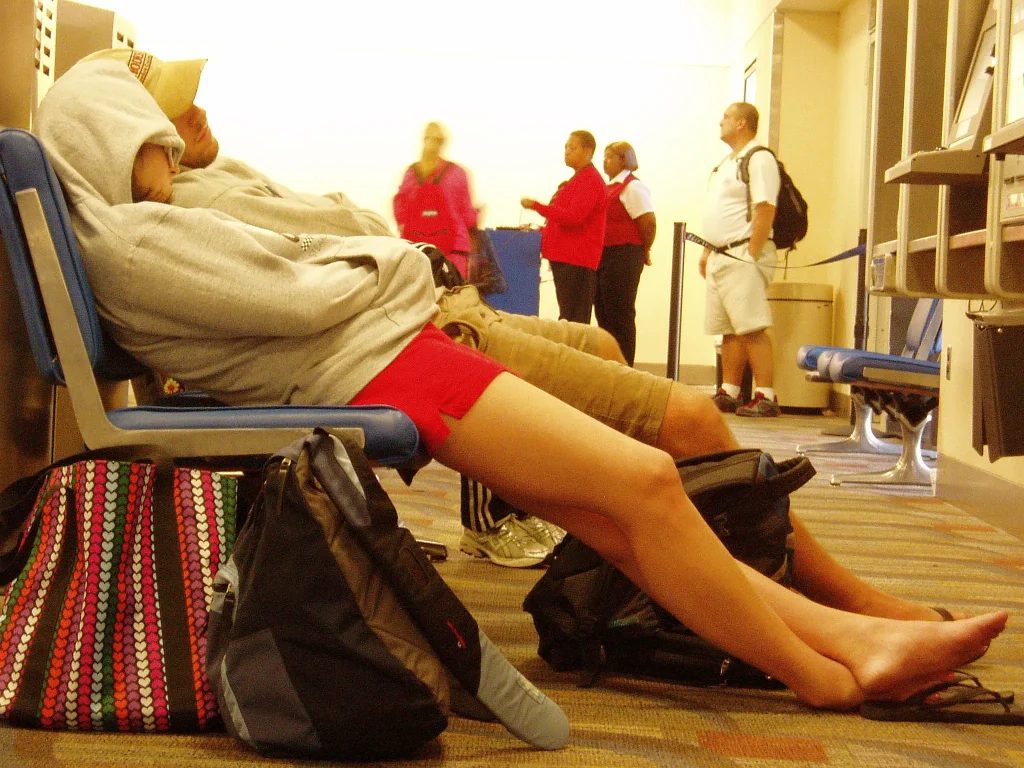Whether to save money, due to circumstances, or out of necessity, travellers often opt for connecting flights. But what happens if you get stuck mid-journey? Here’s what you need to know.
Many people prioritise ticket prices over comfort when booking flights. And why not? Air travel is convenient but expensive. Moreover, post-COVID, flight ticket prices have seen a significant rise, and the previously available discounts and offers have dwindled. Given this, thousands of travellers choose connecting flights over direct ones to save money.
For instance, a direct flight from Mumbai to Paris might cost around ₹55,000, whereas a connecting flight could be available for ₹35,000. Saving ₹20,000 makes choosing a connecting flight a natural decision.

However, connecting flights have their pros and cons. Here, we discuss a situation where a traveller misses their connecting flight, which often leads to stress.
Lower costs, more time:
One of the biggest advantages of a connecting flight is cost savings. Sometimes, these tickets are surprisingly cheap. The biggest downside, however, is the extra travel time. While a direct flight to Paris may take about 10 hours, a connecting flight could take nothing less than 13 hours. Sometimes, it may even take as long as 36 hours! Likewise, some routes have a significant time difference. For example, a direct flight taking 15 hours could take even 40 hours with stopovers.
Still, if saving money is a priority and time is not an issue, opting for a connecting flight isn’t a bad decision. Another advantage is that travellers can explore the city where they have a layover, provided visa regulations allow them to exit the airport.
What to do if you miss a connecting flight?
There can be many reasons for missing a connecting flight. For example:
- Your first flight is delayed while the second one is on time.
- Bad weather disrupts flight schedules.
- Political or operational issues at the connecting airport may prevent flights from taking off.
- The airline operating the connecting flight fails to provide the scheduled service.
These situations can be categorised into two types:
- When the traveller is at fault – For instance, if your first flight is delayed due to weather conditions, the airline of the second flight cannot be held responsible.
- When the airline is at fault – In this case, you have the right to demand a refund or an alternative flight, and the airline is more likely to assist you.
How to choose a connecting flight wisely?
- The safest way is to book both flights with the same airline or airlines that have an interline agreement. This arrangement, known as codeshare, ensures that both airlines take joint responsibility for your journey.
- Ensure sufficient layover time between two flights. For instance, if you are flying from Mumbai to Dubai and then onward, it’s advisable to have at least 5-6 hours between flights. This provides a buffer in case the first flight is delayed, baggage retrieval takes time, or you get confused at the airport.

Key things to remember
- Understand the rules regarding connecting flights and airline partnerships before booking.
- Consider travel insurance to cover situations where a flight is missed. Choose an insurance policy wisely.
- Regardless of whose fault it is, many airlines offer alternative tickets to stranded passengers—sometimes free of charge or at a reduced rate.
- When negotiating for an alternative flight, always remain polite and professional when speaking to airline officials at the airport. Often, a courteous attitude can determine whether or not you receive assistance.

Unplanned layovers: Making the most of an unexpected stop
Missing a connecting flight can be stressful, but if you are stuck at an airport for hours, or even overnight, why not make the best of it? Here is how you can turn an unplanned layover into an opportunity:
Explore the airport: Modern airports are more than just transit hubs. Some, like Singapore Changi, Dubai International, and Amsterdam Schiphol, offer free movie theatres, gardens, spas, and even city tours for transit passengers.
Check for airline perks: Many airlines offer complimentary hotel stays, lounge access, or meal vouchers if your missed connection is due to a delay caused by them. Don’t hesitate to ask the airline desk what they can provide.
Connect and recharge: Use free airport Wi-Fi to catch up on work, emails, or entertainment. If you are a frequent traveller, consider airport lounge access for a comfortable space to relax, shower, and have a meal.
Explore the city (If time and visa allow): If you have a layover of 6+ hours and a visa-free entry option, take a quick city tour! Some airports even offer free transit tours. It is a great way to add an unexpected destination to your journey.
Stay calm and plan ahead: Instead of stressing, use this time to plan your next move. Whether it’s rebooking your flight, finding accommodation, or simply resting before your onward journey!

Quick guide to smart connecting flights
Booking the right connecting flight can make all the difference between a smooth journey and unnecessary hassles. Here are some essential tips to help you make informed choices:
- Best ways to book connecting flights – Always compare fares on airline websites and travel aggregators. Booking both legs with the same airline often ensures better support in case of delays.
- How to avoid missing a connecting flight – Choose layovers with ample time to clear security and immigration. Short connections under an hour can be risky, especially at busy airports.
- Tips for choosing the right layover – Prefer airports known for efficient transit processes. If possible, avoid flights that require you to change terminals with limited time.
- Airline policies on missed connecting flights – If you miss a flight due to airline delays, check if you qualify for a free rebooking, hotel stay, or compensation.
- Saving money on international flights – Connecting flights are often cheaper than direct flights. Look for routes with short, comfortable layovers to balance cost and convenience.
- Airport layover guide – Many airports offer lounges, free city tours, and rest zones. Check in advance what facilities your layover airport provides.
- What to do if you miss a connecting flight – Head to the airline’s transfer desk immediately. Stay calm, check rebooking options, and if needed, explore airport hotels or lounges for a comfortable wait.
By following these practical insights, you can make your connecting flight experience hassle-free while saving both time and money.



